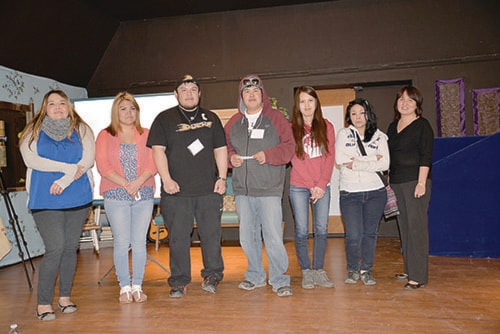The Binche First Nation is demanding self-determination and a split from the Tl’azt’en First Nation.
Joshau Hallman, chair of the Binche Operations Committee said the band, located north of Fort St. James, wants to go in its own way.
“Right now our direction is being controlled by Tl’azt’en Nation but Binche wants to drive their own steering wheel and take on direction of their own values and principles,which right now we’re following someone else’s,” Hallman said.
Binche, Tache, Dzit’ainli and Yekooche First Nations were amalgamated in 1959 as the Stewart Trembleur Band.
Yekooche was the first to de-amalgamate in the ‘90s and have since been on their own.
The Stewart Trembleur Band later changed the name to Tl’azt’en Nation which consists of the three small First Nation communities (Binche, Tache and Dzit’ainli, a.k.a. Middle River).
Binche First Nation first talked about separating from Tl’azt’en in 2011 and has since passed a resolution to become independent. Binche and Tl’azt’en are now working on finalizing the terms-of-division needed to split all assets, liabilities and reserve lands, Hallman said.
“We’re coming into the third step out of four. We’ve submitted the negotiated terms-of-division agreement to the Aboriginal Affairs of Northern Development of Canada (AANDC) BC region who have reviewed the terms and have gotten back with legal formatting suggestions. If we get our terms-of-division reformatted and that satisfies the federal government and it doesn’t need to be amended, we expect to have the de-amalgamation within a year,” Hallman said.
Tl’azt’en First Nation is comprised of seven councillors and one chief. Tache has four councillors, Binche has two and Dzit’ainli with one. This means Tache First Nation has majority of control over Tl’azt’en and any funding the band receives.
A benefit of having the communities together is one administration cost for all. However, should the Binche separate, they will have to pay for their own administration costs such as public works, education and health, Ron Winser, executive director of Tl’azt’en Nation said.
“Once Binche takes their population [out], Tl’azt’en Nation numbers per capita will decrease and Tl’azt’en will then receive less funding, but it will balance out. We’ll receive less funding but we will have to provide less services to a smaller population. [Binche will] gain their sovereignty but the people they put into positions will have to wear more hats,” Winser said.
A Binche and Tl’azt’en separation committee have worked together to negotiate terms-of-division but, now two things need to happen, Tl’azt’en First Nation Chief Justa Monk said.
“Finalizing of assets and a referendum for both Tache and Binche. Then we wait to hear the decision from the ministry,” he said. “As far as I’m concerned it’s not a done deal yet.”
However, the Binche has already begun to prepare for separation and is in the midst of establishing their leadership code (government structure and elections). They have started putting financial and human resource policies into place, engaging with the membership on these topics to make sure they’re ready for the day the separation happens, Hallman said.
“That way were not rushing into quick decisions that could turn into bad decisions. The exciting part is everything we do here at Binche is new, so if there’s an old practice we can change it to a new one that works in the best interest of the people and nation itself,” Hallman said.
A youth council has been established at Binche to engage the community and to allow youth to be involved in the changes. One youth representative will be given a seat on the official Binche council once established. The First Nation is also in the works of streamlining their housing department, changing policy to be more of a standalone entity, Hallman said.
“We did have a large deficit in housing here with people not paying rent but within the past six months we were successful to get every house to pay rent and pay down our deficit. It’s the first time this has happened and everyone’s on board,” Hallman said.
